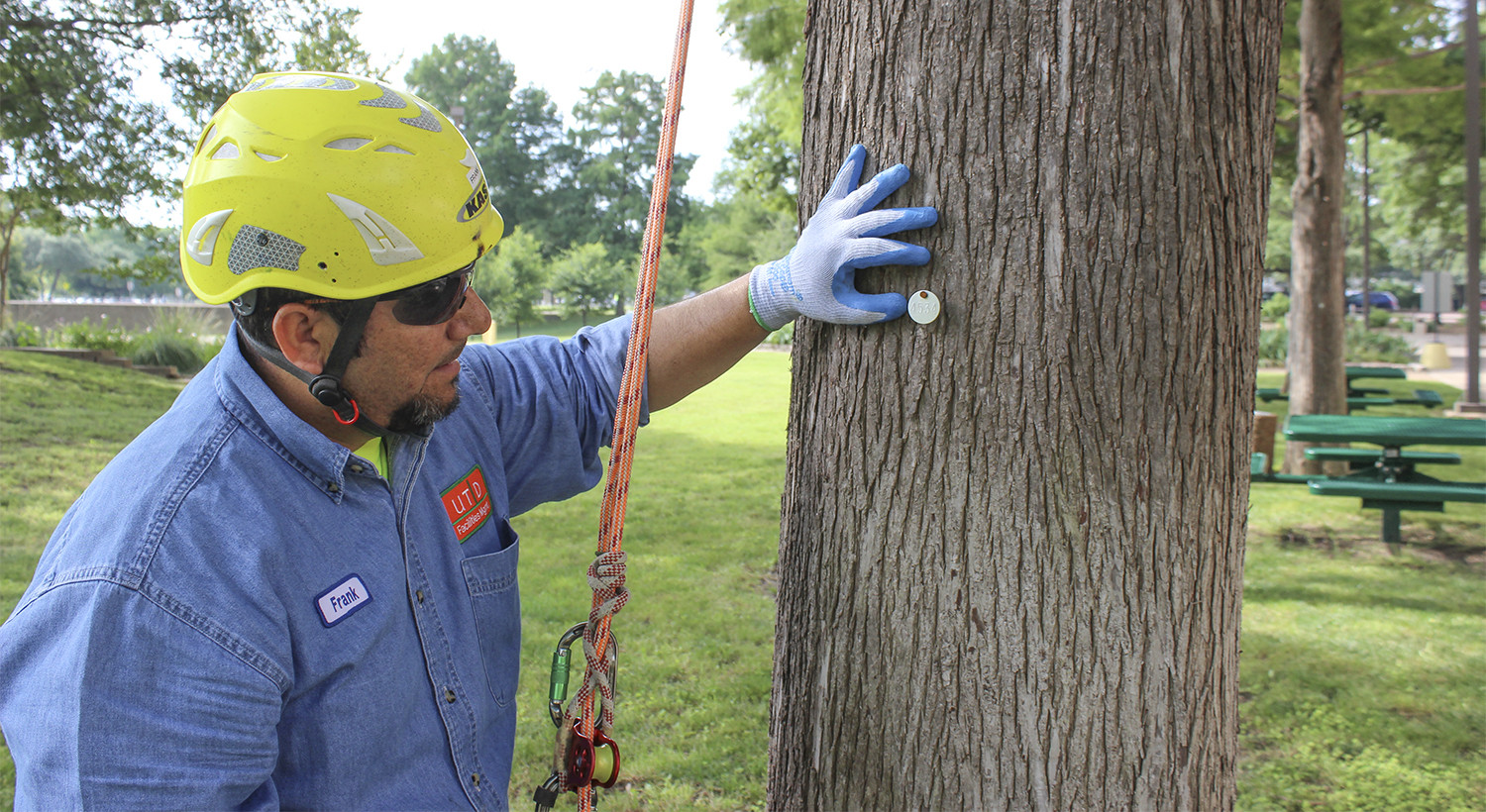Over the past two months, Facilities Management has worked to tag and record data for about 5,000 trees on campus in the hopes of joining a national arboreal conservation program and to simplify grounds maintenance.
Using a company called Arbor Pro, Landscape Supervisor Jay Jascott hired experts to come to UTD and identify the species and health of each tree.
“Before we were doing this, (arborists) would go out and we’d do tree assessments,” he said. “This is just another means we can compile all this into a very useful tool. … First and foremost, it’s a maintenance tracking device for us.”
The project, which cost $7 per tree, tied each tree to both a specific GPS location and a number. With this system, Jascott said the hope was to streamline communication between called-in tips and Facilities about which tree on the property needs maintenance.
“We’ve spent a lot of money on our trees,” said Thea Junt, the associate director of energy conservation and sustainability for Facilities Management. “This is how we’re going to ensure that we are maintaining them in a healthy state.”

Junt said the next part of the project is to apply to Tree Campus USA, a division of the Arbor Day Foundation, which recognizes universities that meet their five set standards of dedication to campus environment.
In order to join, UTD must develop a tree advisory committee, a tree care plan, a budget for that plan, a dedicated Arbor Day observance and a service learning component. Junt said the university meets the five standards, and will apply to the program by Sept. 1.
Part of UTD’s tree care plan states Facilities will plant two trees for every one damaged or removed during construction projects.
“The ultimate goal is to never lose any trees due to them just dying because of nature,” he said. “There is an inherent eco-value to these trees.” – Jay Jascott, Landscape Supervisor
“I’m going to be … going back and forth with (Junt),” said Frank Rodriguez, the campus arborist. “I’ll let (her) know the (trees) she’s fixing to lose.”
In line with Facilities’ push to preserve trees when possible, the new alumni center being built was designed around the trees existing in that area.
“The Alumni Center is special because it is a building being built in a garden,” Junt said.

Rodriguez bolstered the trees on the construction site with organic fertilizer, injected straight into the trunk and the surrounding soil. Jascott said this should help keep them healthy during the period of flux.
“We’re juicing them up to get ready, because they’re going to be in a construction site and they’re going to get stressed,” he said.
Jascott said because the university started out with an existing urban forest, the added 7,000 trees over the course of campus landscape projects means it’s more difficult for Facilities to keep up.
“The ultimate goal is to never lose any trees due to them just dying because of nature,” he said. “There is an inherent eco-value to these trees.”











